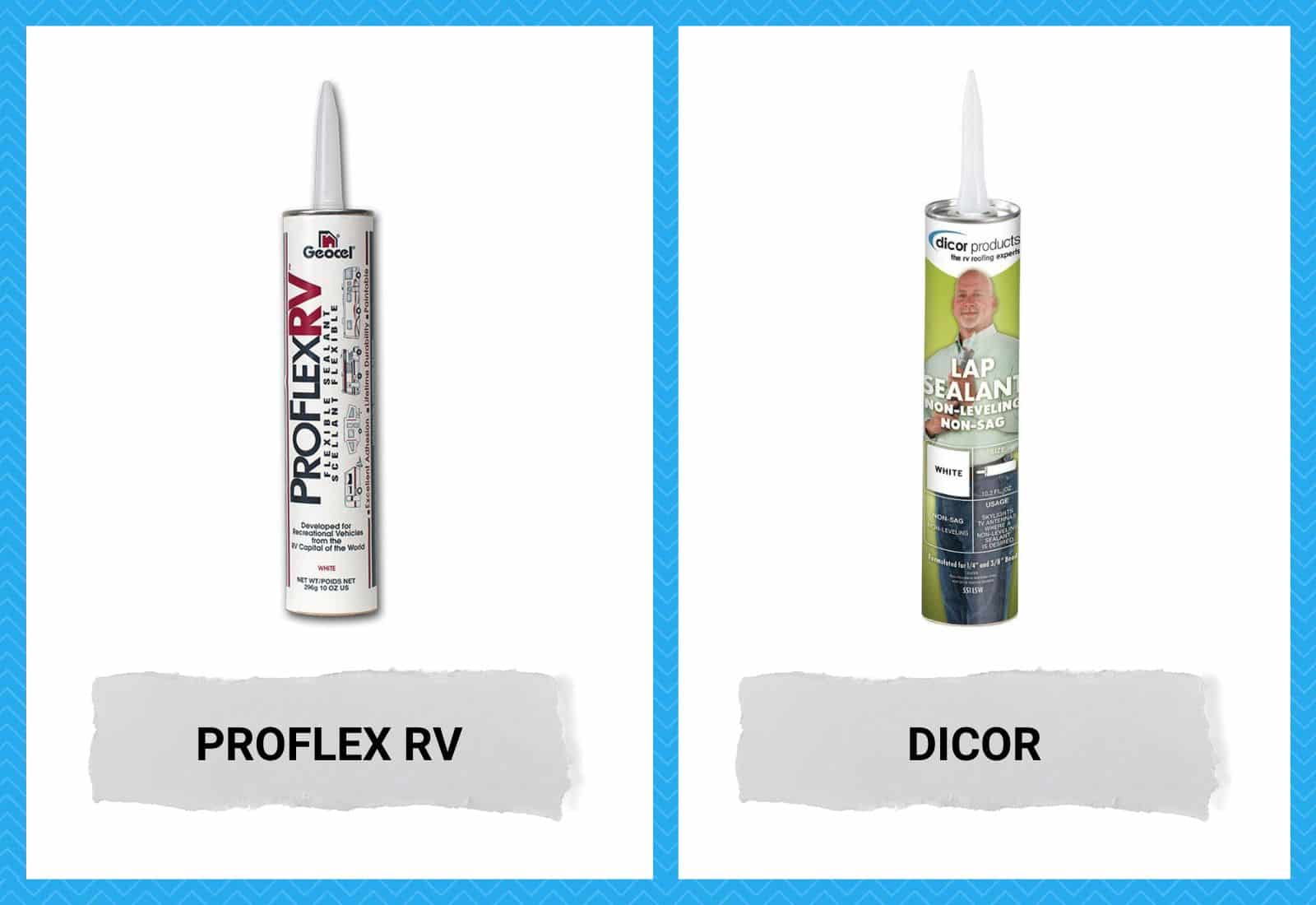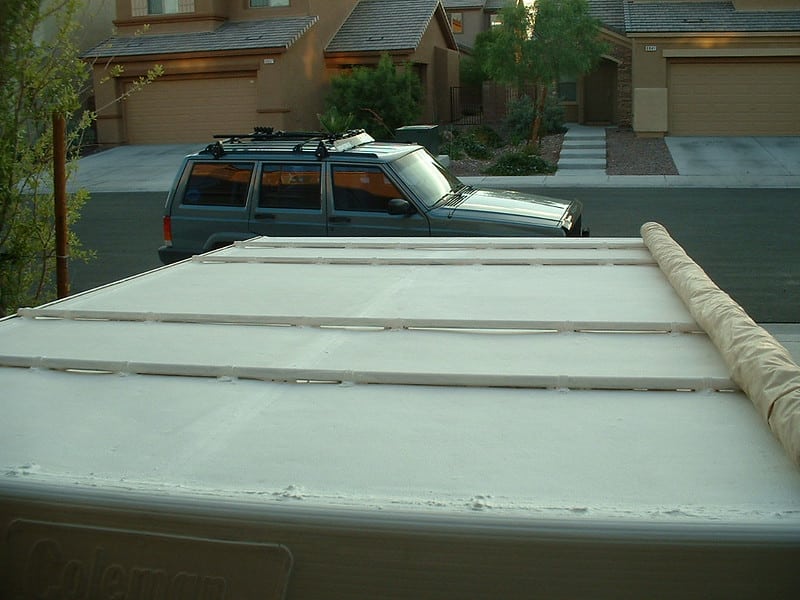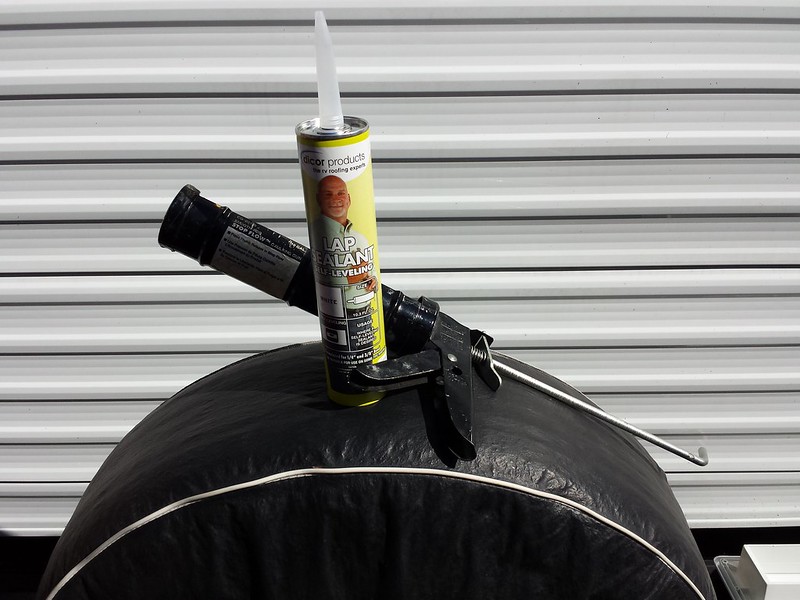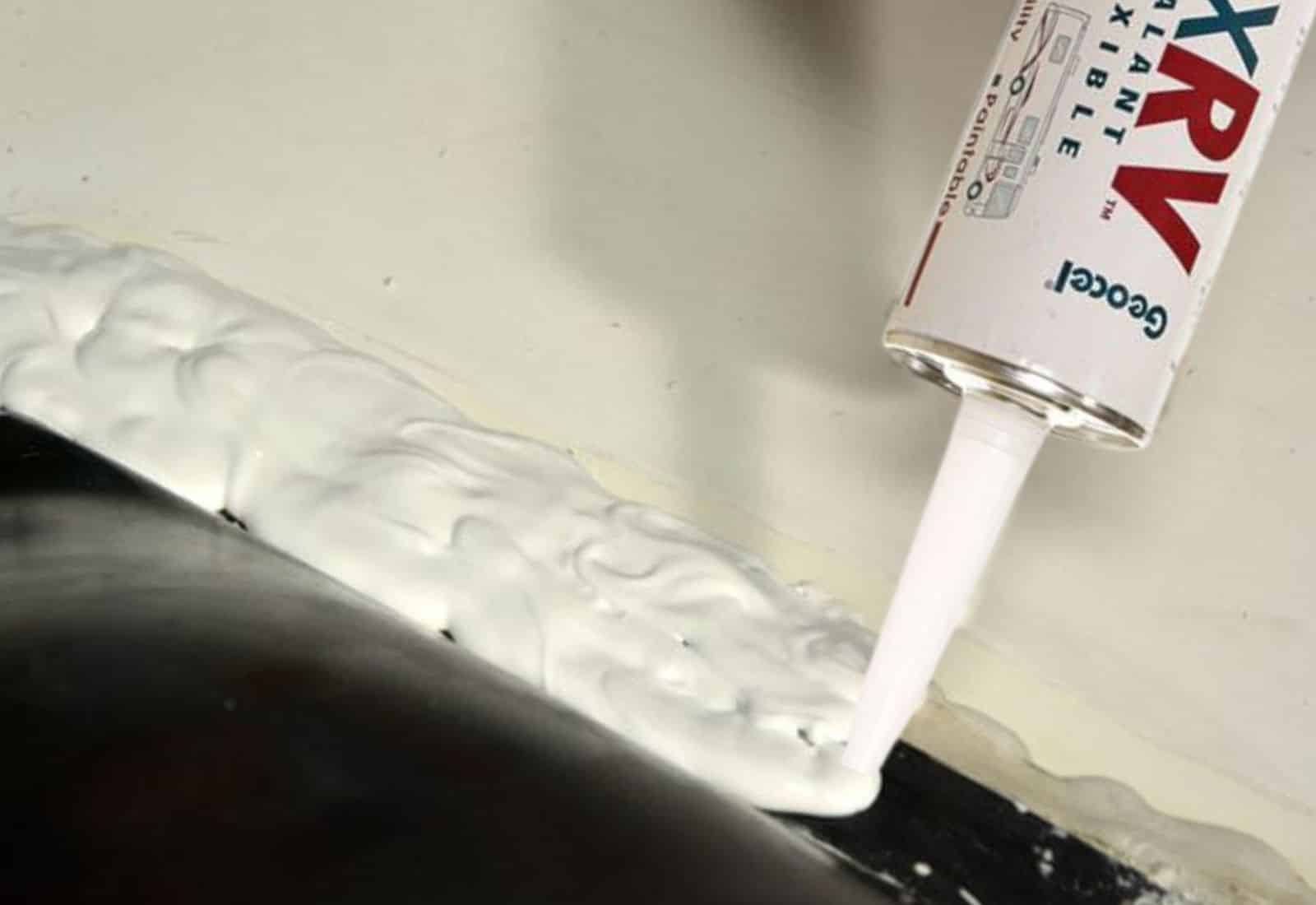
Introduction
RV sealant is the unsung hero that allows RVs to be what they are today. It has enormous applications for essentially every building material that professionals and DIYers the world over use.
Unfortunately, there are two severe competitors in the market that both offer the perfect sealant solution, Proflex RV and Dicor. Identifying the perfect one can take a lot of work due to the abundance of potential applications.
Therefore, this article has been created to provide you with the necessary information to make the best-informed decision.
Applications for Sealants
Sealants offer a variety of valuable qualities. First and foremost, they are excellent at creating a weather-resistant seal for compromised RV areas. If water leaks through any exterior surfaces, it is the beginning of the end for your RV.
Over time the shell will naturally degrade and allow water to permeate the vehicle’s interior. Hence why, the sealant is so essential. It is effective at sealing newly formed holes.
More significantly, it can be used as a preventative measure for securing edges of rooftop appliances, screws holes, and degraded existing seals.
They can be used for every building work element, which can be used to stick, fill and protect components. This has become increasingly significant due to the demand for roof-mounted accessories like vents, satellite dishes, skylights, AC units, and endless more.
These additions must be installed by cutting space in the RV’s roof and screwed or glued into place. Moreover, the volume of electrical components installed on the exterior of RVs has created an even greater demand for proficient seals around waterproof housing for junction boxes.
Ultimately, the sealant is critical for modern RVs. Whether it is to attach new components or fix the deteriorating structure, the sealant is an essential weapon in an RV owner’s arson. Therefore it is crucial to identify the best possible option between Proflex and Dicor.
ProFlex RV vs Dicor
Dicor Non-Leveling Sealant
Dicors non-leveling sealant has been around in the building industry for some time. It has become a staple for a good reason too. It offers a highly water-resistant seal that has been specially formulated to take the hardships of rooftop conditions.
It has been designed to take on wet freezing conditions combined with baking sunlight to provide a trustworthy, robust material. It has been manufactured to resist the deteriorating properties of UV light to prevent discoloration and the disintegration of watertight seals.
Finally, it can work just as effectively as glue to bind everything from concrete, wood, vinyl, galvanized metal, and many more. It truly is an excellent all-around addition to any building project.
Proflex RV Sealant
One of the more significant differences between Provlex and Dicor is that it is designed specifically for recreational vehicles. Proflex has identified that RV owner requires an all-rounder which can specifically meet their need for a mobile vehicle.
This means that it has been formulated to adapt to any RV area, from rooftop holes to kitchen/bathroom seals. Moreover, the vibrating condition experienced during driving has been accounted for with the Proflex.
It provides advanced elastic quality that prevents the seals from being shaken loose over time. Essentially, this is a more precise tool that has been designed with the needs of RV owners in mind.
General Comparison
| Features | Dicor | Proflex RV |
|---|---|---|
| Weight | 13 Oz | 13 Oz |
| Unique Advantages | Ultra durable and UV protected serum. | It can be bent and stretched without breaking or damaging the protective seal. |
| Unique Advantages | Approx. $20 | Approx. $12 |
| Color | Grey | White |
| Size | 12:4:4 Inches | 2:3:11 Inches |
| Brand | Dicor | Geocel |
| Curing Time | 48 hours - 30 days | six days |
Price
Reviewing the comparison table. It is clear that overall, the products appear to be generally similar. The key distinction is firstly the price. Counterintuitively the custom-made sealant for RVs is cheaper than the typical builders’ Dicor version.
This is highly unusual, as typically, the more niche the product’s target, the more exclusive it becomes. Fortunately, RV owners can find a cheaper product in this case.
However, Dicor is a building merchant’s product and can be purchased in far larger quantities for a significant discount. Therefore, it may be preferable for an RV owner to purchase the Proflex, which should be ample for smaller projects and ultimately cheaper.
Crucially, the curing time for each product varies considerably. The Dicor requires 4 hours for a skin to form, 48 hours to become waterproof, and, amazingly, up to 30 days to fully cure.
It takes a remarkably long time for a product to dry, but it is a testament to the complex nature of this solid sealing agent.
The Proflex RV indicated that it takes six days to complete a curing process. Although it is still a considerable waiting time, it would be a far more preferable option for a last-minute repair or installation.
Curing time will be vital if you plan an RV tour in advance. Thirty days would be excessive and takes away a lot of freedom for RV enthusiast. However, it may be worth it to create a more robust seal.
Self Leveling.
A seemingly minor but essential comparison is their self-leveling qualities. This is particularly important when you are filling holes in your RV. Self-leveling serums will produce a smooth layer with ease.
Comparatively, you will have to manually smooth out the sticky substance, which can be complicated and messy. Fortunately, Proflex and Dicor have self-leveling qualities which are critical for neat and simple repair and installation work.
Durability
Dicor is also a more renowned brand and is considered a valuable tool by a larger market of building merchants and DIY enthusiasts. It has long been considered stable in the building industry, and it is reasonable to suggest that it is a more effective sealing and gluing agent overall.
This is through a combination of UV protection and hydrophobic qualities combined with a more ridged material after the curing process. However, it is far less resilient after prolonged exposure to vibrations and is more brittle than Proflex.
Although Dico might be effective on roof fixtures, it is no match for the operational environments RVs are put through. Proflex is the more effective agent when.
Conclusion
Ultimately, either curing agent would make an excellent sealing material for your RV. However, after reading this article, it is clear that there are some serious considerations to contemplate to come to the optimum conclusion.
This includes application, curing time, price, durability, etc. Each of the products offers a variety of pros and cons, but the Proflex RV appears to come out on top. It is cheaper and purpose-built with various applications bespoke to RV maintenance and repair.
However, it is so closely matched by the Dicor that whatever you have closest to hand should work for you.




